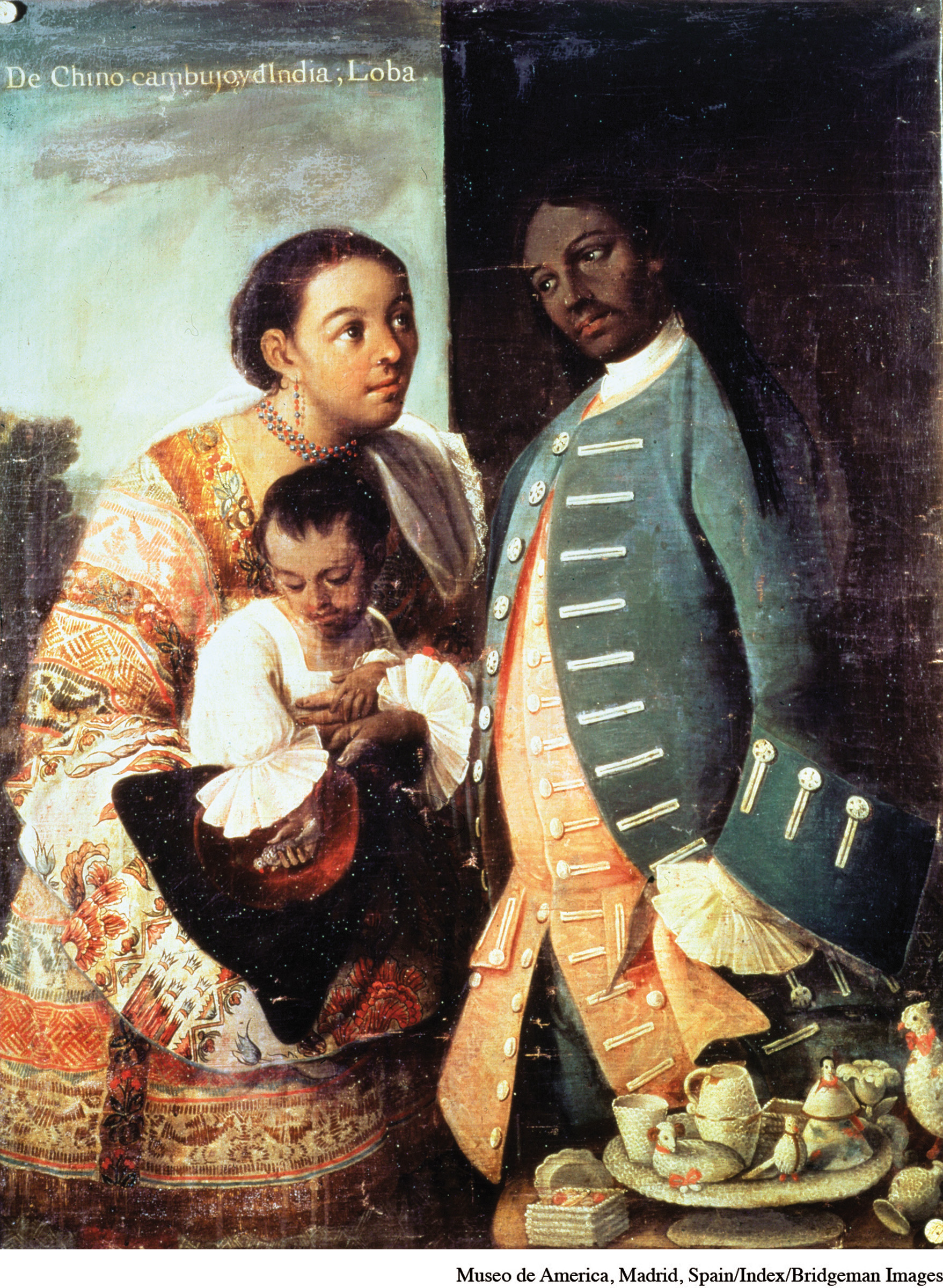14.4 Clothing and Status in Colonial Mexico
The emerging colonial societies of Spanish and Portuguese America gave rise to a wide variety of recognized mixed-race groups known as castas, or “castes,” defined in terms of the precise mixture of Native American, European, and African ancestry that an individual possessed. While this system slotted people into a hierarchical social order defined by race and heritage, it did allow for some social mobility. If individuals managed to acquire some education, land, or money, they might gain in social prestige and even pass as members of a more highly favored category (see “In the Lands of the Aztecs and the Incas” in Chapter 13). Adopting the dress and lifestyle of higher-ranking groups could facilitate this process.
Source 14.4 shows a woman of Indian ancestry and a man of African/Indian descent as well as their child, who is categorized as a loba, or “wolf.” It comes from a series of “casta paintings” created in eighteenth-century Mexico by the well-known Zapotec artist Miguel Cabrera to depict some eighteen or more mixed-race couples and their children, each with a distinct designation. The woman in this image is wearing a lovely huipil, a traditional Maya tunic or blouse, while the man is dressed in a European-style waistcoat, vest, and lace shirt, while holding a black tricorne hat, widely popular in Europe during the seventeenth and eighteenth centuries. Interest in such paintings reflected both a Spanish fascination with race and a more general European concern with classification, which was characteristic of eighteenth-century scientific thinking.

Source 14.4 Clothing and Status in Colonial Mexico Museo de America, Madrid, Spain/Index/Bridgeman Images
- What indications of status ambition or upward mobility can you identify in this image? Keep in mind that status here is associated with race and gender as well as the possession of foreign products.
- Why do you think the woman is shown in more traditional costume, while the man is portrayed in European dress?
- Notice the porcelain items at the bottom right. Where might they have come from?
- In what cultural tradition do you think this couple raised their daughter? What problems might they have experienced in the process?
